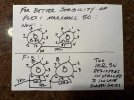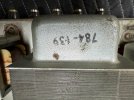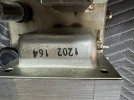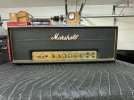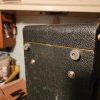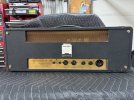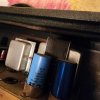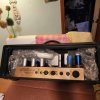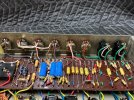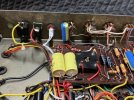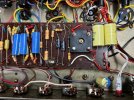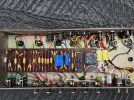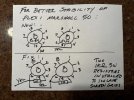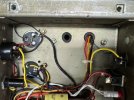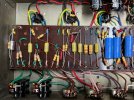I am selling my 50w plexi that has just been tuned up, caps, tubes, biased for matched set of EL34’s.
Here is what John Nau from Nau Engineering said about the grid resisters.
He basically says, adding the resistors will allow any tubes to be used, if they are matched and the amp is biased with expert care.
‘It dawned on me why the high stress is occurring on the output tubes: this amp does not have screen grid resistors. I think the best idea is to leave it the way it is, totally stock and original, but explain to any future owner that the amp would run better with these resistors installed. I could supply you with a pair of these to provided with the amp, as well as simple instructions to install them. I’m not sure why the designers decided to build it this way: almost every amp I ever see (Marshalls included) have screen resistors.’
I must post 5 threads before listing the head.
I will make these posts as replies to this thread.
Stay tuned!
I have 35 pics in this album, posting after 5 posts when links are allowed.!
Here is what John Nau from Nau Engineering said about the grid resisters.
He basically says, adding the resistors will allow any tubes to be used, if they are matched and the amp is biased with expert care.
‘It dawned on me why the high stress is occurring on the output tubes: this amp does not have screen grid resistors. I think the best idea is to leave it the way it is, totally stock and original, but explain to any future owner that the amp would run better with these resistors installed. I could supply you with a pair of these to provided with the amp, as well as simple instructions to install them. I’m not sure why the designers decided to build it this way: almost every amp I ever see (Marshalls included) have screen resistors.’
I must post 5 threads before listing the head.
I will make these posts as replies to this thread.
Stay tuned!
I have 35 pics in this album, posting after 5 posts when links are allowed.!

